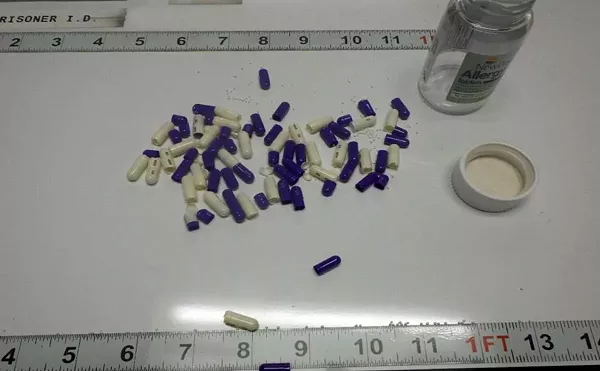It's still only early December, but News Hits is already on the verge of going postal as a result of an affliction we've self-diagnosed as PCOS, otherwise known (at least to us) as Premature Christmas Overload Syndrome.
A sure sign this dreaded syndrome has taken hold: We're ready to take an Uzi to the next public loudspeaker we hear spewing "Jingle Bell Rock." We heard the first carols sometime around Halloween, so we're pretty much fed up with all things Santa Claus-y by this point.
Even so, we've decided to break our self-imposed moratorium on yuletide items because we just can't help being overcome by the spirit of giving, especially when it involves giving the makers of dangerous toys a hard time.
Assisting us in that endeavor are a couple of the state's premier do-gooder groups, namely the Ecology Center over in Ann Arbor and the Public Interest Research Group in Michigan, aka PIRGIM.
By the time this paper comes out, the Eco Center folks should have the second installment of their healthytoys.org website up and running. Following the pattern established when the project was first undertaken last year, the nonprofit — with the assistance of a few other groups around the country — tested more than 1,500 kiddie toys to find out what sort of nasty things they might contain.
The results — which can be found in a database posted on the site — weren't exactly reassuring. "One-third of the toys tested had 'high' or 'medium' levels of chemicals of concern this year," according to the group.
Fifty-four of the products tested exceeded the lead limit of 600 parts per million (ppm) set by the state last year.
Of particular concern is jewelry, which "remains the most contaminated product category," the group reported. "Children's jewelry is five times more likely than other products to contain lead in concentrations greater than 600 ppm."
Children exposed to lead can suffer irreversible developmental and nervous system problems.
Mike Shriberg, public policy director for the Ecology Center, tells News Hits that it's important for people to realize that the problem of contaminated toys isn't associated with any particular country. China may have received a lot of bad press the past few years, but there's no guarantee that an item is necessarily safe just because a stamp on it says "Made in USA."
"We didn't find any consistent correlation between the country of origin and the presence of hazardous chemicals," says Shriberg.
As for the good news, 62 percent of the items tested contained only low levels of what the group calls chemicals of concern — including lead, arsenic, mercury and brominated flame retardants — and 21 percent of the products tested contained no chemicals of concern.
"These products look and feel no different than other children's products on the shelf," says Shriberg. "These findings show that manufacturers can and should make toys free of unnecessary toxic chemicals."
Last year, he said, toy companies had two basic responses to publication of the testing results. Some thanked the group for providing notice and took steps to work with manufacturers to reduce or remove the chemicals causing concern.
Others tried to call into question the significance of the findings, claiming that the levels of contaminants being found were minute and that parents were being unduly scared by the report.
Although only a small fraction of the millions of toys on the market could be tested, visitors to the website can nominate toys that they'd like to see screened. Those mentioned most often will be tested in the coming weeks. Also, the Ecology Center and its partner groups will sponsor a series of "Toy Testing Town Halls" between now and Christmas. The first will be held Saturday, Dec. 13, from 10 a.m. to noon at the Ann Arbor District Library's Mallets Creek branch.
We've also heard from PIRGIM (Public Interest Research Group in Michigan), which is busy spreading the word about the 23rd annual toy safety survey released by its parent organization (U.S. Public Interest Research Group). Called "Trouble in Toyland," that report — which can be found at toysafety.net — warns that "hazardous toys are still sold in stores across the country, despite a new law overhauling the nation's product safety watchdog agency."
That agency would be the Consumer Product Safety Commission, described by PIRG as "a little agency with a very big job to do."
"The recall of 45 million toys and other children's products in 2007 and continued recalls in 2008 reminded Americans that no government agency tests toys before they are put on the shelves," the group reported.
Congress recently boosted the agency's budget and gave it more teeth, including what PIRG called "tough new protections against toxic chemicals like lead and phthalates." (The latter are used to soften plastics.)
The problem is that these protections have not yet gone into effect.
"As parents and other toygivers venture into crowded malls this holiday season," PIRG warns, "they should remain vigilant about often hidden hazards posed by toys on store shelves."
News Hits is edited by Curt Guyette. Contact him at 313-202-8004 or NewsHits@metrotimes.com





